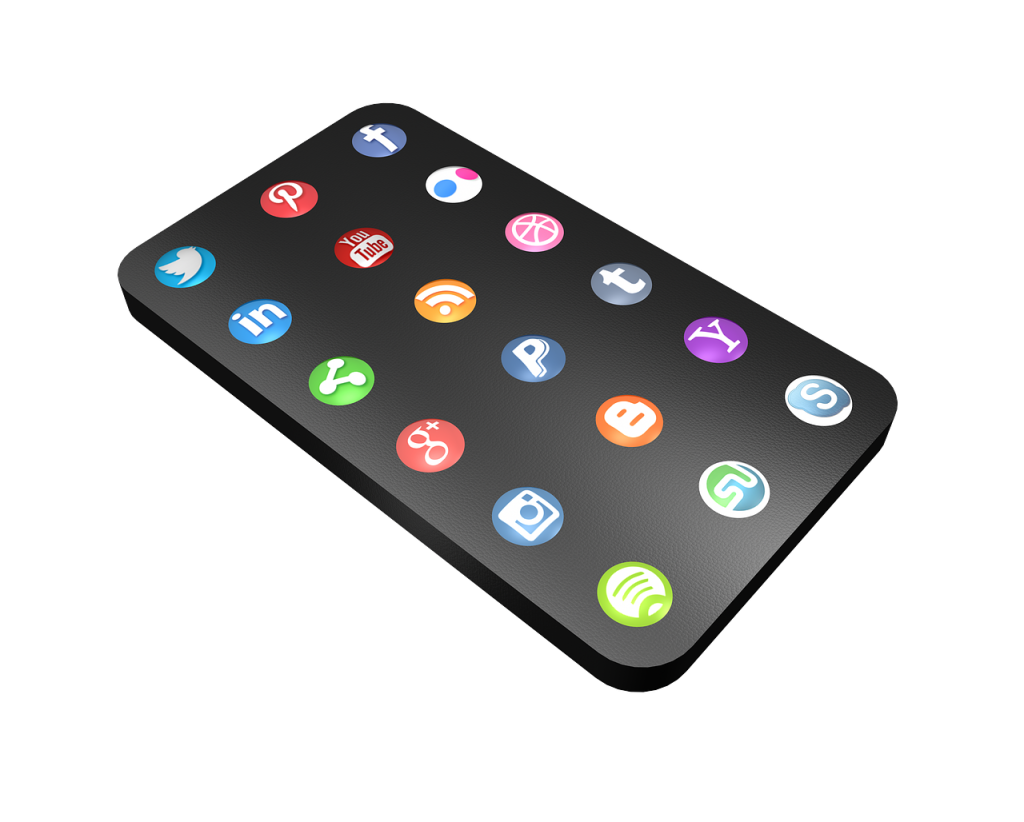In today’s increasingly digital world, mobile applications have become an integral part of businesses, offering a unique avenue for engaging with customers and driving growth. For startup entrepreneurs in the Long Island NY area, investing in app development can be a strategic decision that sets the stage for success. This article serves as a comprehensive roadmap, guiding you through the intricacies of app development and its potential impact on your startup. By exploring key considerations such as market research, user experience, and cost analysis, you will be empowered to make informed decisions that align with your business goals and cater to the needs of your target audience. Embark on this journey with us as we uncover the secrets to harnessing the power of app development for startup success.

Understanding the Importance of App Development
In today’s digital era, mobile apps have become an integral part of our daily lives. The influence of mobile apps continues to grow, and businesses are recognizing the significance of developing their own apps. Whether you own a small startup or a well-established enterprise, having a mobile app can provide numerous benefits and give you a competitive edge in the market.
Recognizing the Growing Influence of Mobile Apps
Mobile apps have revolutionized the way we interact with technology and have significantly impacted various industries. With the extensive usage of smartphones and tablets, people now rely on mobile apps for various purposes, including communication, shopping, entertainment, and productivity. According to recent statistics, the number of mobile app downloads is expected to reach 258 billion by 2022, highlighting the immense potential for businesses to tap into this growing market.
The Benefits of Having a Mobile App for Your Business
Having a mobile app can offer several advantages to your business. Firstly, it provides a direct and personalized channel for interacting with your customers. Through push notifications and in-app messaging, you can easily communicate updates, promotions, and important information to your target audience, increasing engagement and building brand loyalty.
Secondly, a mobile app can enhance your brand visibility and awareness. With a well-designed app available on major app stores, you can reach a wider audience and attract new customers. Additionally, having a mobile app can differentiate your business from competitors and position you as an innovative and customer-focused brand.
Furthermore, a mobile app can improve your customer service and satisfaction. By integrating features such as chatbots, FAQs, and customer support portals, you can provide instant assistance and resolve queries promptly. This enhances the overall user experience and fosters positive customer relationships.
Lastly, a mobile app can drive sales and revenue for your business. With features like e-commerce integration, mobile payment options, and personalized recommendations, you can streamline the purchasing process and incentivize customers to make repeat purchases. Additionally, you can leverage data analytics from the app to gain insights into user behavior and preferences, enabling you to optimize your marketing strategies and drive conversions.
Key Considerations Before Investing in App Development
Before diving into the app development process, it is essential to consider several key factors. Firstly, you need to clearly define your business objectives and goals for the app. Whether it is to increase brand awareness, improve customer service, or drive sales, having a clear vision will ensure that the app development aligns with your overall business strategy.
Secondly, you should analyze your target audience and understand their requirements. Conduct market research and gather user feedback to identify the features and functionalities that would add value to your app. This will help you create a user-centric app that caters to the needs and preferences of your target audience.
Another crucial consideration is the choice of platforms and technologies for app development. Depending on your target audience and resources, you can opt for iOS, Android, or cross-platform development. Evaluate the pros and cons of each platform and select the one that suits your business needs and budget.
Identifying App Development Needs
Once you have recognized the importance of app development, the next step is to identify your specific app development needs. This involves determining your business objectives, analyzing your target audience, and exploring available platforms and technologies.
Determining Business Objectives and Goals
Before embarking on the app development journey, it is crucial to establish clear business objectives and goals. Define what you aim to achieve with the app – whether it is to increase sales, improve customer engagement, enhance brand visibility, or streamline internal processes. Having well-defined objectives will guide the development process and ensure that the app aligns with your overall business strategy.
Analyzing Target Audience and User Requirements
Understanding your target audience is essential for developing a successful app. Conduct market research, gather user feedback, and analyze user behavior to identify their preferences and pain points. This information will help you create a user-centric app that caters to the specific needs of your target audience. Consider factors such as demographics, user habits, and device preferences to ensure optimal user experience.
Exploring Available Platforms and Technologies
Choosing the right platform and technology for app development is a critical decision. Consider factors such as target audience, budget, and development resources while deciding between iOS, Android, or cross-platform development. Each platform has its benefits and limitations, so research and evaluate the pros and cons of each option before making a final decision. Additionally, keep abreast of the latest technologies and frameworks to ensure that your app is built on cutting-edge solutions.
Creating a Solid App Development Strategy
Once you have identified your app development needs, it is essential to create a solid strategy that will guide the entire development process.
Defining the App’s Purpose and Functionality
Before delving into the technical aspects, clearly define the purpose and functionality of your app. Determine the core features and functionalities that are essential for achieving your business goals. Consider user feedback and market research to ensure that your app addresses the pain points of your target audience effectively.
Establishing a Comprehensive App Development Timeline
Developing an app requires careful planning and coordination. Establish a comprehensive timeline that outlines the various stages of app development, including design, development, testing, and deployment. Set realistic deadlines and milestones to ensure that the project progresses smoothly and is delivered within the expected timeframe.
Setting a Realistic Budget and Resource Allocation
App development can be a significant investment, so it is crucial to set a realistic budget and allocate resources accordingly. Consider factors such as development costs, marketing expenses, and ongoing maintenance to determine the overall budget for the project. Additionally, assess your internal resources and capabilities to decide whether to develop the app in-house or outsource to a professional app development agency.
Finding the Right App Development Team
The success of your app development project depends on the expertise and skills of the development team. Finding the right team involves considering factors such as development approach, skills, and collaboration capabilities.
Choosing Between In-House or Outsourced Development
Deciding whether to develop the app in-house or outsource to a third-party agency is a crucial decision. In-house development offers more control and flexibility but requires the necessary resources and expertise. On the other hand, outsourcing can provide access to specialized skills and expertise, but it requires careful vendor selection and clear communication.
Evaluating the Skills and Expertise of Potential Developers
When evaluating potential developers, consider their portfolio, experience, and expertise in app development. Assess whether they have worked on similar projects and possess the necessary technical skills to turn your app idea into reality. Communication and collaboration skills are also crucial for ensuring a smooth development process.
Building a Collaborative and Agile Development Team
Creating a collaborative and agile development team is essential for the success of your app project. Encourage open communication, establish clear roles and responsibilities, and foster a culture of innovation and continuous improvement. Adopt agile development methodologies to ensure flexibility, adaptability, and faster time-to-market.

Planning and Designing the App
The planning and design phase is crucial for laying a solid foundation for your app. It involves creating a wireframe, designing a user-friendly interface, and implementing best practices for app design.
Creating a Wireframe and Prototype of the App
A wireframe is a skeletal framework that depicts the layout and structure of your app. It serves as a blueprint for the development team and helps visualize the flow and functionality of the app. Create a wireframe that represents the core features and user interface to validate the app concept before moving on to the design phase.
Developing a User-friendly and Intuitive User Interface
The user interface (UI) is a critical component of app design as it directly impacts user experience. Design a UI that is intuitive, visually appealing, and consistent with your brand identity. Consider factors such as ease of navigation, clear call-to-action buttons, and efficient information display to ensure a seamless user experience.
Implementing App Design Best Practices
When designing your app, it is essential to implement design best practices to enhance usability and aesthetics. Follow platform-specific design guidelines, consider accessibility standards, and ensure responsiveness to different screen sizes and resolutions. Incorporate visual elements, such as icons, color schemes, and typography, that resonate with your target audience and reflect your brand image.
Developing and Testing the App
After the planning and design phase, it is time to begin the actual development and testing of the app. This involves coding the app, implementing quality assurance measures, and ensuring compatibility and performance optimization.
Coding the App Using the Chosen Technology Stack
Based on your platform and technology choice, the development team will code the app using the chosen technology stack. Whether it is native development, hybrid development, or cross-platform development, ensure that the code is clean, modular, and well-documented for future maintenance and scalability. Follow industry standards and coding best practices to ensure a robust and secure app.
Implementing Quality Assurance and Testing Procedures
Testing is a crucial phase in app development to identify and rectify any bugs or issues. Implement a comprehensive quality assurance process that includes unit testing, integration testing, and user acceptance testing. Conduct thorough testing on multiple devices and platforms to ensure that the app functions seamlessly and meets the user requirements. Additionally, gather feedback from beta testers and incorporate user insights to further refine the app.
Ensuring Compatibility and Performance Optimization
To ensure a smooth user experience, it is essential to optimize the app for performance and compatibility. Test the app on various devices, operating systems, and screen sizes to identify any compatibility issues. Optimize resource usage, minimize loading times, and optimize data storage to enhance app performance. Additionally, implement caching mechanisms, compression techniques, and other optimization strategies to improve overall user experience.
Marketing and Launching the App
Once the app development and testing are complete, it is time to shift focus to marketing and launching the app. Effective app promotion and visibility are crucial for attracting users and generating downloads.
Creating an Effective App Promotional Strategy
Develop a comprehensive app promotional strategy that includes targeted marketing campaigns, social media promotion, and influencer collaborations. Determine your target audience and identify the channels and platforms where they are most active. Leverage user testimonials and reviews, create engaging app store descriptions and screenshots, and highlight the unique selling points of your app to entice users to download it.
Identifying Targeted Marketing Channels
Identify the marketing channels that are most effective in reaching your target audience. Consider strategies such as search engine optimization (SEO), app store optimization (ASO), content marketing, and paid advertising. Leverage app analytics tools and user insights to refine your marketing strategy and optimize your campaigns for maximum reach and impact.
Maximizing App Store Optimization and User Acquisition
Optimizing your app store presence is crucial for attracting users and improving app visibility. Conduct keyword research, optimize your app title and description, and utilize relevant app screenshots and videos to effectively communicate your app’s value proposition. Additionally, focus on user acquisition strategies such as referral programs, incentivized downloads, and collaborations with relevant app partners to drive downloads and user engagement.
Measuring and Analyzing App Performance
Once your app is launched, it is essential to measure and analyze its performance to refine your marketing strategies and drive continuous improvement.
Utilizing App Analytics Tools for Performance Tracking
Leverage app analytics tools to gather valuable insights into user behavior, app usage patterns, and conversion rates. Measure key metrics such as app downloads, active users, user engagement, and retention rates. Analyze user demographics, preferences, and user flow to identify areas for improvement and optimize your app’s features and functionalities.
Analyzing User Feedback and Ratings
User feedback and ratings provide invaluable insights into user satisfaction and pain points. Monitor app reviews, ratings, and user comments to understand user sentiment and address any issues promptly. Actively engage with users, respond to feedback, and incorporate user suggestions to enhance the user experience and foster positive relationships.
Monitoring Key Performance Indicators (KPIs)
Set key performance indicators (KPIs) that align with your app’s goals and objectives. These could include metrics such as revenue generated, conversion rates, average session duration, and customer lifetime value. Continuously monitor these KPIs and assess your app’s performance against predetermined benchmarks. Identify areas of improvement and implement data-driven strategies to achieve your desired KPIs.

Updating and Maintaining the App
App development is an ongoing process that requires regular updates and maintenance to ensure optimal performance and user satisfaction.
Implementing Regular App Updates and Bug Fixes
Regular app updates are essential for introducing new features, improving performance, and fixing any bugs or issues. Stay ahead of changing technology trends and user preferences by incorporating new functionalities and enhancements regularly. Promptly address any bug reports or crashes reported by users to maintain a positive user experience.
Ensuring App Compatibility with New OS Versions
The release of new operating system (OS) versions can impact app compatibility. Stay updated on the latest OS releases and ensure that your app remains compatible with the latest versions. Test your app on beta versions of new OS releases and address any compatibility issues before the official release to minimize disruption for users.
Offering Customer Support and Troubleshooting
Providing excellent customer support is crucial for retaining users and building brand loyalty. Set up channels for customer support, such as in-app chat, email, or a dedicated support portal. Respond promptly to user queries and troubleshoot any issues reported by users. Regularly analyze user feedback and incorporate user suggestions to continuously improve your app’s performance and user satisfaction.
Evaluating App Success and ROI
The success of your app is determined by its performance in meeting your predefined business objectives. Regularly evaluate key metrics and assess the return on investment (ROI) to track your app’s success and identify areas for further improvement.
Assessing App Downloads, User Engagement, and Retention
Analyze the number of app downloads, active users, and user engagement metrics to evaluate the initial success of your app. Monitor user retention rates and identify the factors that contribute to high user retention. Assess the user behavior and identify app features that are most popular and beneficial to users.
Analyzing App Revenue Generation and ROI
Measure the revenue generated through your app and analyze the return on investment (ROI) to determine the app’s profitability. Evaluate different revenue streams, such as in-app purchases, subscriptions, and advertising, and optimize your monetization strategy accordingly. Incorporate user feedback and market trends to identify new revenue opportunities and maximize your app’s revenue potential.
Identifying Areas for Further Improvement
Continuous improvement is key to the long-term success of your app. Regularly analyze user feedback, app performance metrics, and market trends to identify areas for further improvement. Incorporate user suggestions, implement new features, and optimize user experience to enhance your app’s value proposition. Stay updated on the latest industry trends and be proactive in adapting your app to evolving user needs and preferences.
Investing in app development can be a game-changer for businesses, providing a means to engage with customers, increase brand visibility, and drive revenue. By following a comprehensive app development roadmap and considering the specific needs of your business, you can successfully navigate the app development journey and reap the benefits of a well-designed and user-friendly mobile app.
© 2023 by LiVentures. Reserved all rights. This document cannot be copied or communicated in any way without LiVentures’ prior written consent, whether it be electronically, mechanically, through photocopying, recording, or another medium.
